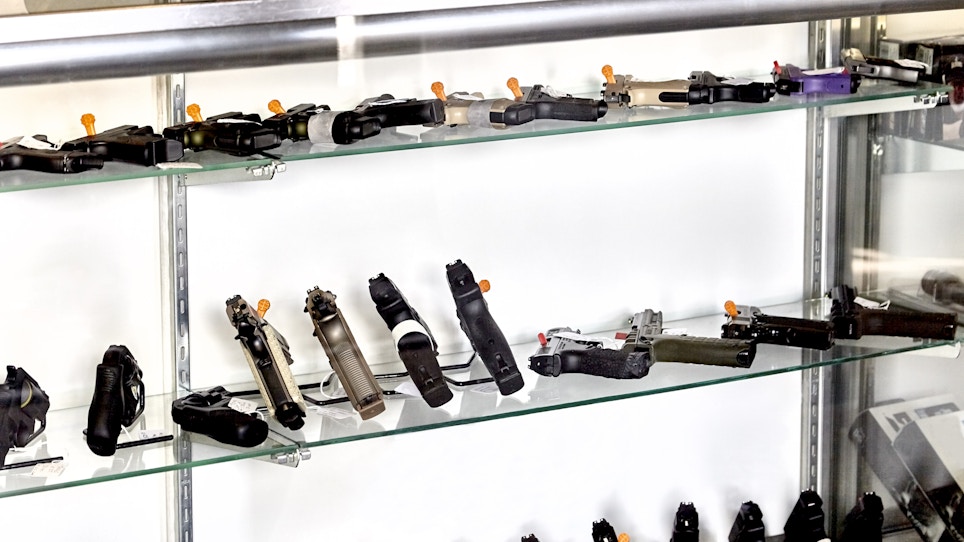This year is already looking like one for the books. It is a transition for the shooting sports industry from nearly a decade of full-on government attacks to a time when we’ll likely be at least significantly unmolested by government.
Throughout the run of the Obama administration, the shooting sports industry was grinding through the low gears in all-wheel drive, fighting just to stay even. Now it is time to shift upward, all the way to overdrive — a time to hit the cruise control button and move forward smoothly and at high speed.
It was close. Had the presidential election gone the other way, we would be in a whirlwind of regulations and restrictions. These would be only precursors to Supreme Court decisions that would have gutted, if not made moot, the Second Amendment that guarantees the right to own and bear arms — and by extension, the right to sell arms.
Had that happened, the industry likely would have seen a level of panic buying, the likes of which it never knew. But it didn’t work out that way. So, what now?
Bluntly, it’s up to individuals in the retail element of the shooting sports industry to take advantage of the current situation. During the dark years of the Obama administration, the active base of gun owners and shooters expanded tremendously. That means we now have a “new normal” that is bigger than anything imagined before. That larger base needs to be fed, so to speak.
Manufacturing and marketing focus in recent years have been aimed largely at responding to a panic buying market. The game has changed, which means that this is “let’s make a deal” time.
For the most part, the supply chain is solid, perhaps even bloated in some product categories. It promises to be a year when retailers will be able to pass on “deals” to customers while still maintaining a respectable profit line.
The SHOT Show this year was one of the biggest in history. That’s nice. Some companies exhibited cautious optimism for the coming years. Others see sales continuing to increase.
So how is that cessation of panic buying doesn’t result in the bottom dropping out of the market in the shooting sports industry? The answer is simple, but not immediately apparent.
The industry has changed fundamentally in recent years. For the most part, the added legions of buyers and shooters represent a “brand” of their own. Yes, they, as much as the products they buy and use, are a brand.
For them, the “look” is every bit as important as the function — perhaps more important in some categories. Their guns and gear are statements of who and what they are.
They replace cell phones and other electronic devices with regularity. The specific device they use at any given time reflects where their heads are at that given time and what look they want to have and project in the moment. It is the same with the guns and gear they choose to buy.
Here is where little things literally mean a lot. Things as simple as a different accent color here, a different forend hole design there, that sort of thing.
It is a fundamental matter of identity and attitude. The guns and gear being used reflect the buyers/shooters in ways not known historically. It is the antithesis of political correctness. These shooters are “edgy,” and they want to use products that enhance that visual identity.
Exactly how and where all of this, as well as the more traditional shooters and buyers, fit into the state of the industry is fascinating.
“Now we look forward with new hope to a period in which we may breathe a little easier,” said National Shooting Sports Foundation president and CEO Steve Sanetti during his State of the Industry address at the SHOT Show. Sanetti’s speech would have been much different had the Presidential election turned out otherwise.
There were various themes to discussions around the floor of the SHOT Show. The mood became more positive as the show progressed.
Judging from comments, this may be one of the best years ever to sell accessories, gadgets and goodies to go along with the millions of guns sold during the past decade.
That is not to suggest that gun sales are trouble, but merely to note that the very nature of modern sporting rifles, etc. lends itself to accessorizing – and the updating of accessories on top of that.
Although black guns/tactical rigs have received most of the attention in recent times, their sales seem not to be taking away from other forms of guns and gear. Rather, it is for the most part above and beyond.
Wood-stocked long guns with shiny finishes are alive and well. Just look at Browning’s line of competition shotguns or Mossberg’s introduction of a Patriot rifle with checkered wood stock, forend tip, grip cap spacer, etc. These and the many other introductions and line extensions in the more traditional firearm arena bear witness to the fact that there is vitality throughout.
It doesn’t mean that success is as simple as picking up revenue dollars like mushrooms on the forest floor. It does mean that the market is there for those who capitalize on it.
For much of the industry, last year broke all kinds of records and represented the last gasp anomaly of panic buying that was triggered by governmental meddling in the gun business and with the rights of the citizenry.
I did not hear anyone suggesting that this year will break those records. Nor did I hear anyone insist that the bottom is falling out. Rather, the outlook seems to range from good to great, depending on specific circumstances.
Featured image: iStock







